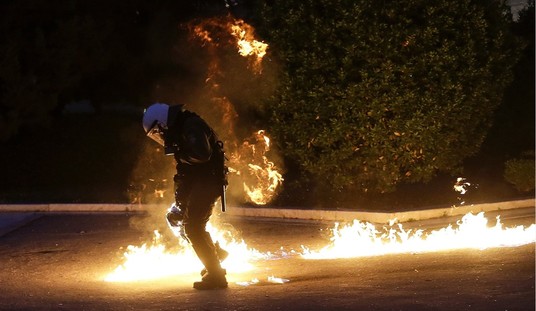“I know everyone will remember me as some sort of monster but please understand that I just don’t want to be a burden on the ones that I care for my entire life. I just want to take a few peices (sic) of (expletive) with me.”
These words are taken from the suicide note of 19-year-old Robert Hawkins, the gunman who murdered eight people in an Omaha mall on December 5. While Hawkins succeeded in destroying innocent lives before taking his own, he incorrectly predicted how he’d be viewed by “everyone” in the aftermath of the massacre. Committing a monstrous crime, it turns out, doesn’t automatically qualify you as a monster in the eyes of many people. For example, sympathy — maybe even respect — for Hawkins is what’s expressed in an interview one of his friends gave to a local television station:
I don’t think anything less of him because I know that Robby would have never done anything like this just for the fun of it. … He wanted to go out in style, and that’s what he did.
Apparently murder isn’t even enough to retire the usage of the diminutive form of the murderer’s name. In fact, the reporter also referred to Hawkins as “Robby” when asking the friend questions like “What are you thinking about now that you know that Robby was involved in this shooting?” (The word “commit” can’t be used by the nonjudgmental.) It’s hard to disagree with talk show host Dennis Prager when he makes the case that such rhetoric is symbolic of society’s inability to make moral condemnations. But aren’t some crimes so horrific that everyone should abhor them?
More proof that tolerance for murder is becoming a trend comes from the story of two Penn State students who dressed as Virginia Tech shooting victims at a Halloween party. Not even a year has passed since Seung-Hui Cho murdered 32 people in the deadliest school shooting in U.S. history, yet one of the Penn State students was disgusted that a Virginia Tech student created a Facebook group called “People Against This Costume” in response to the tasteless choice of attire.
This is a group of college students who now think it’s trendy to be upset about their friends being killed. … The thing is, everybody’s making a big stink about Virginia Tech. Virginia Tech was 32 deaths out of the 26 thousand that happen in America everyday. That’s the problem with college students. They all live in an ivory tower of privilege.
While it’s not politically correct to make a “big stink” about the killings of privileged college students or holiday shoppers at the mall, honoring the murderers of Israelis is PC approved. Consider last year’s big college costume controversy. When Syrian-born engineering student Saad Saadi showed up at a Halloween party dressed as a suicide bomber, University of Pennsylvania President Amy Gutmann had no problem posing with him for a photograph. Gutmann later explained that she wasn’t aware of Saadi’s choice of costume even though he’s shown in the photograph with a kaffiyeh around his head, a toy Kalashnikov rifle in his hand and six plastic sticks of dynamite strapped to his chest. Moreover, Saadi explained that Gutman jokingly asked, “How did they let you through security?” when he asked her to take the photograph with him.
One wonders if Gutmann would have also found the humor in the Nazi costume Prince Harry wore to a party in 2005. Harry would have fit in perfectly in the class of one Harvard University professor, who has described his shock upon learning that the majority of his students didn’t believe anybody was to blame for the Holocaust. He referred to his students’ attitude about the past as “no-fault history.”
Indeed, a report commissioned by the National Association of Scholars in 2002 found that, “A large majority of this year’s college graduates report that their professors tell them there are no clear and uniform standards of right and wrong.” That’s not surprising when you consider this selection from the text Peace and Conflict Studies by Professors David Barash and Charles Webel, which many students read in their peace studies classes:
Placing “terrorist” in quotation marks may be jarring for some readers, who consider the designation self-evident. We do so, however, not to minimize the horror of such acts but to emphasize the value of qualifying righteous indignation by the recognition that often one person’s “terrorist” is another’s “freedom fighter.”
Christina Hoff Sommers, who has taught ethics courses, has written about colleges’ responsibility to provide students with what the philosopher Henry Sidgwick called “moral common sense.” Sure, young people hear their professors’ opinions on capital punishment, abortion, stem cell research and, yes, suicide bombings, but “they learn almost nothing about private decency, honesty, personal responsibility, or honor.”
Until they do, we shouldn’t be surprised to see college students dressed up as suicide bombers or shooting victims. After all, one person’s monster is another’s hero who just wanted to go out with a bang.










Join the conversation as a VIP Member